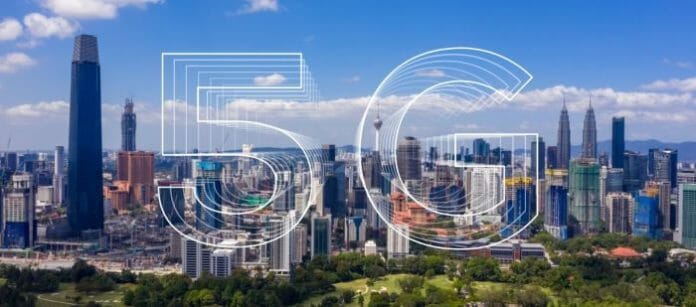OOKLA in its latest 5G speedtest report, placed both Malaysia and South Korea ahead in 5G performance in the region ahead of European peers.
With these nations leading in Asia Pacific, OOKLA said it was unsurprising that their capital cities came first as well in the ranking of selected cities. In H1 2023, Seoul had a median download speed of 533.95 Mbps, while Malaysia’s capital, Kuala Lumpur, reported a median download speed of 523.44 Mbps. Digital Nasional Berhad, Malaysia’s designated 5G wholesale provider, reported 90% 5G coverage of populated areas (COPA) throughout Kuala Lumpur at the end of 2022.
Malaysia was notably late in rolling out its 5G infrastructure due to political interference and a rather unorthodox approach of a single government-owned entity tasked to build the network. However, under the new government, the Single Wholesale Network model has been replaced with the Dual Wholesale Network where the telecommunication operators can now partake in the connectivity agenda.
On the other hand, despite being one of the first markets to launch 5G, the Indian cities of Delhi and Mumbai performed well in the cities’ speeds ranking. Both cities reported median download speeds of over 300 Mbps in H1 2023, with Delhi at 357.43 Mbps and Mumbai at 319.45 Mbps. While Kuala Lumpur, Mumbai, and Delhi have shown 5G performance comparable to or even exceeding those of well-established 5G markets in the region, their 5G networks are still relatively new. As a result, these cities have lower 5G Availability than others as anticipated.
Metro Manila, with one-third of the population of the Philippines, had the lowest median download speed among all the cities in this report for H1 2023, with a speed of 135.51 Mbps. During the same period, Metro Manila reported a 5G availability rate of 35.7%, slightly lower than Seoul (35.9%) and Sydney (39.2%).
The Asia-Pacific region is seeing a rise in the adoption of 5G FWA, with Southeast Asia leading the way. In 2019, Globe Telecom in the Philippines, became the first country in the region to launch FWA. Other regional operators, such as Telkomsel in Indonesia and AIS in Thailand, have also begun offering FWA services. In New Zealand, operators plan to provide FWA coverage to 90% of the population by the end of 2023.
While 5G FWA shows promising growth potential, operators need to ensure that as 5G adoption in the network increases, they have the capacity to support their FWA services and the spectrum to guarantee quality. When the demand for 5G FWA service grows, operators may have to look at utilizing the mmWave spectrum to maintain the quality of their FWA services while keeping network capacity intact









